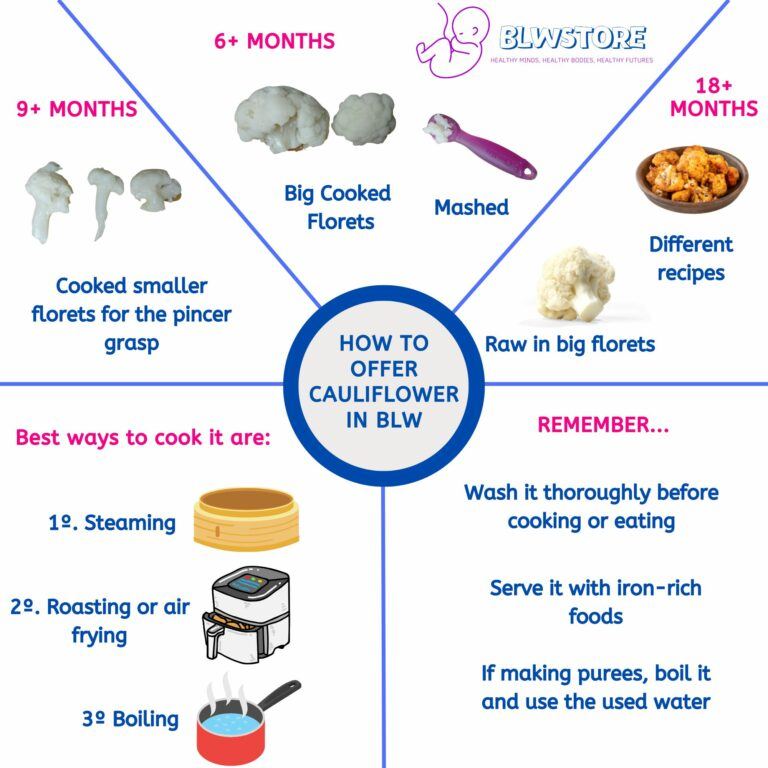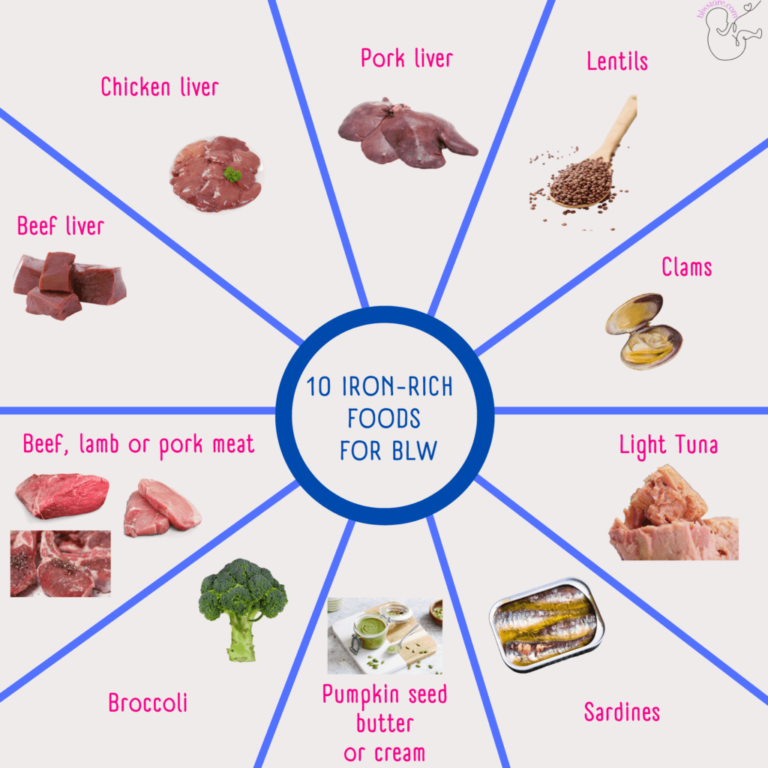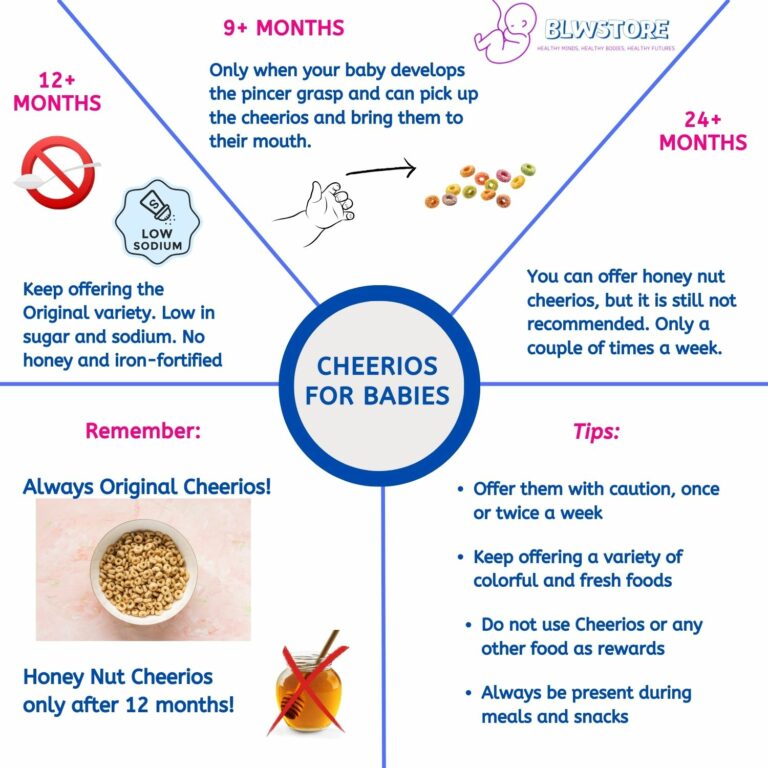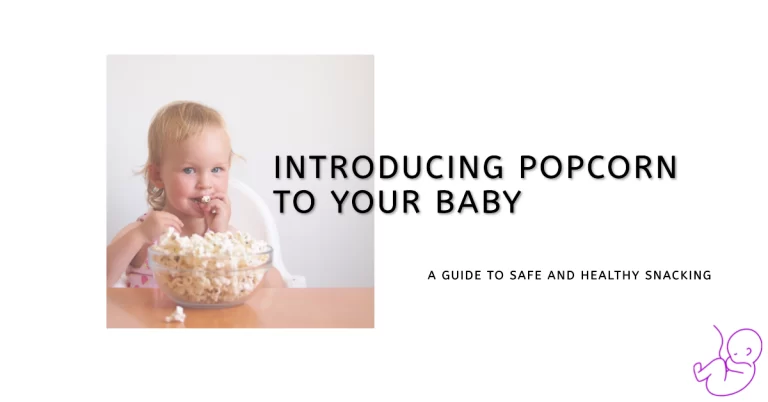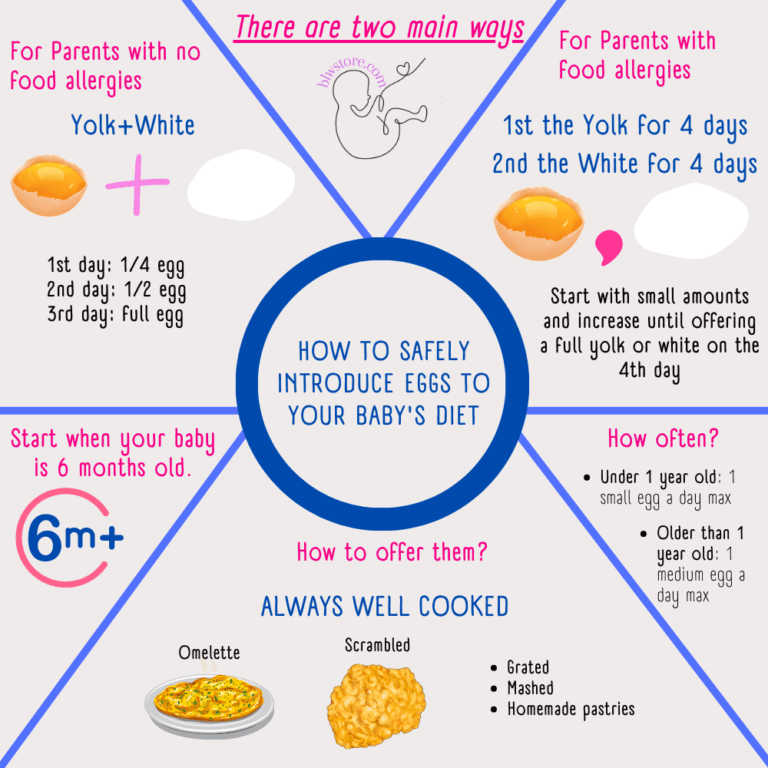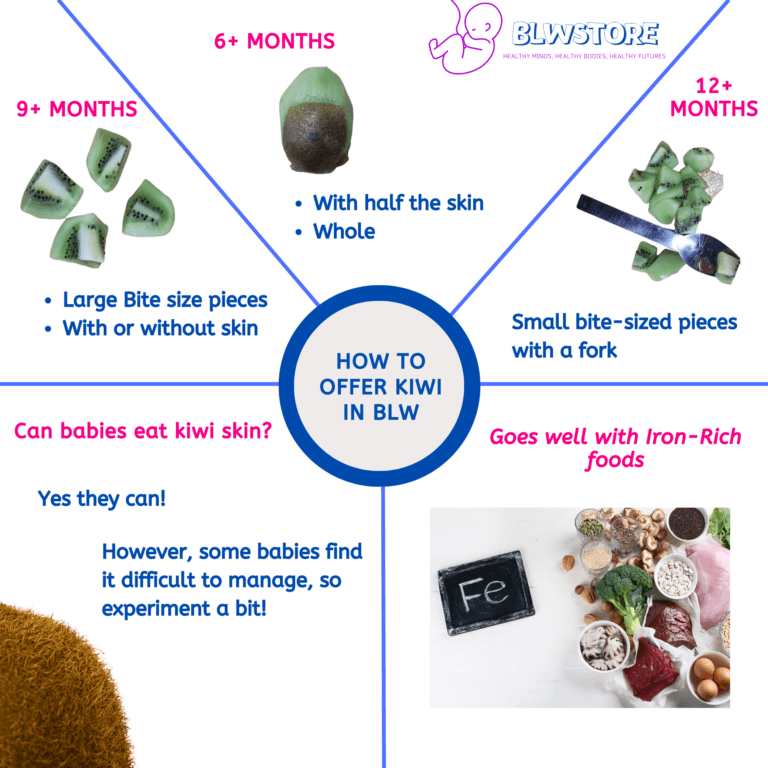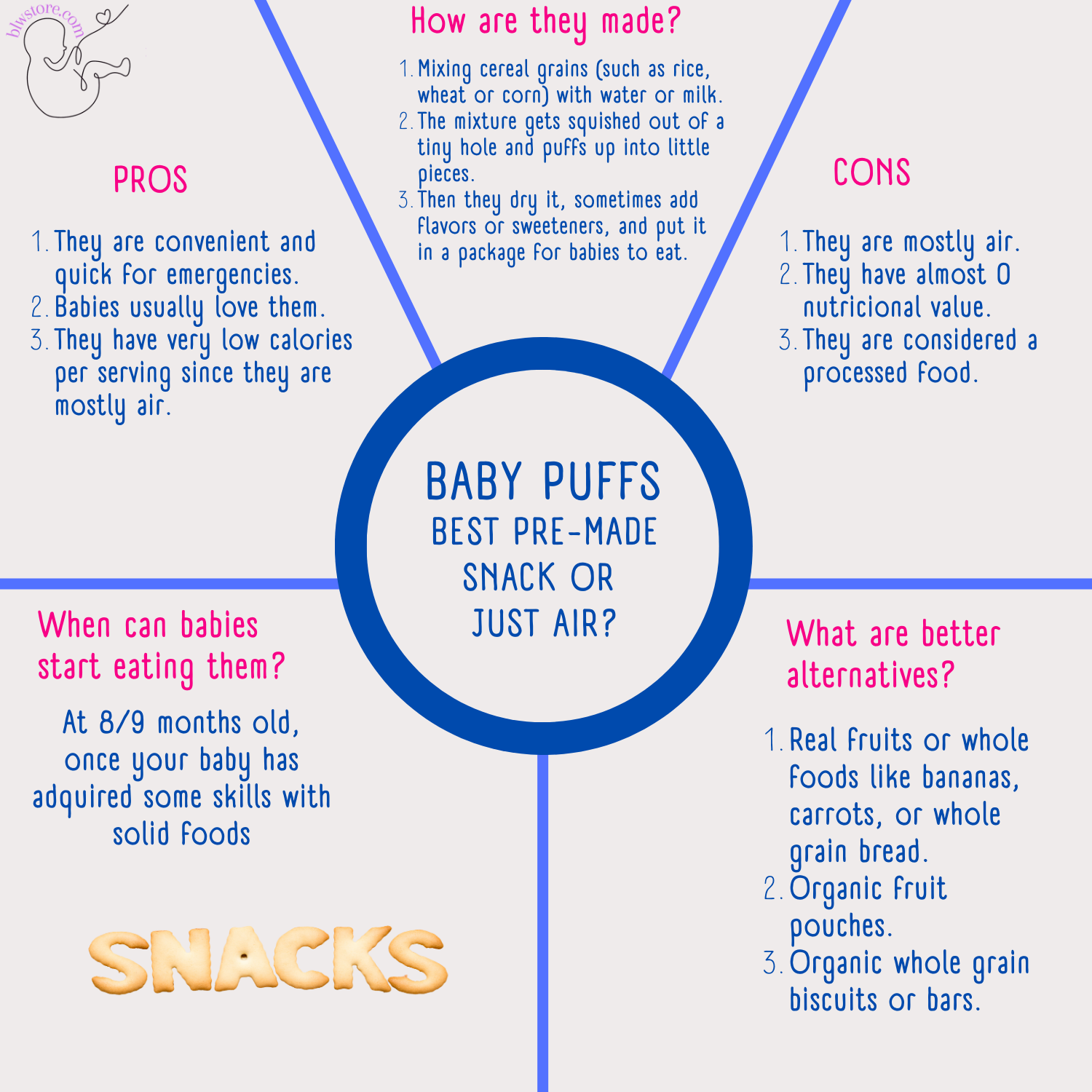
Welcome to our baby puffs guide!
These little, puffed nibbles are a common addition to many newborns’ diets, so if you’re a parent, you probably already know about them.
However, you could be concerned about their nutritional content, safety, and availability of substitute organic options. We are here to provide you with all the required knowledge to ensure that you provide your child with the greatest snacks possible.
You’ll discover the ideal age to introduce baby puffs, their nutritional value, and the ideal calorie and serving amounts. Additionally, we’ll discuss things like homemade baby puff recipes and other organic snack alternatives and where to buy them.
By the time you finish reading this article, you’ll be an authority on baby puffs and have all the knowledge you need to choose the right snacks for your child.
Short Version
We do not recommend offering baby puffs daily. They should be treated the same way as other ultra-processed foods. Having said that, they can come in handy when travelling, but take into account that it’s much better to offer fruits.
- Baby puffs are small, puffed snacks made from cereals that were designed for babies learning to eat solid foods.
- Babies can start eating baby puffs around eight months old, after some experience eating solid foods.
- Baby puffs are low in nutrients, so they should not replace a balanced diet with nutrient-dense foods.
- Homemade baby puffs can be made using various grains and a simple baking process.
- Baby puffs were invented in the early 1990s by Gerber, and many other brands now offer their own versions.
- Baby puffs are made using extrusion cooking, which involves heating and forcing a mixture of ingredients through a small hole to create puffed cereal pieces.
- Some baby puffs may contain added iron, but they generally do not contain added fiber or sugar.
- Baby puffs can be a healthy snack option for babies when consumed in moderation, but other nutrient-dense snacks like Holle organic biscuits, bars, and fruit pouches are recommended as better alternatives.
- Baby puffs can be found in supermarkets, baby shops, and online retailers like Amazon, Walmart, and Target.
- It’s important to provide a balanced diet and prioritize nutrient-dense foods over baby puffs for optimal health and development.
What are Baby Puffs?
Baby Puffs are small, puffed snacks made from cereals such as rice, wheat, or corn and designed for babies introduced to solid foods.
These snacks are sold and advertised to be excellent finger foods for infants learning to eat independently because they are frequently created with natural ingredients.
They come in a variety of tastes and kinds. They are simple to chew and swallow and frequently supplemented with vitamins and minerals.
Due to their minimal sugar and fat content, they are frequently seen as a healthy snack choice for infants.
When can babies start to eat baby puffs?
Babies can start eating baby puffs at around 8 months, once they have certain skills in eating solid foods. It is not a good idea to start at 6 months, as it is better to offer more nutritious and natural solids so that your baby gets used to those flavors earlier.
What are the nutritional benefits of baby puffs?
The nutritional information on baby puffs varies depending on the brand, so you will need to read the labels.
In any case, baby puffs are very low in nutrients and are still a processed food. They are puffy and, therefore, full of air.
In general, offering them as part of a balanced diet is not wrong, but it is always better to opt for other types of snacks, which we will see later in this article.
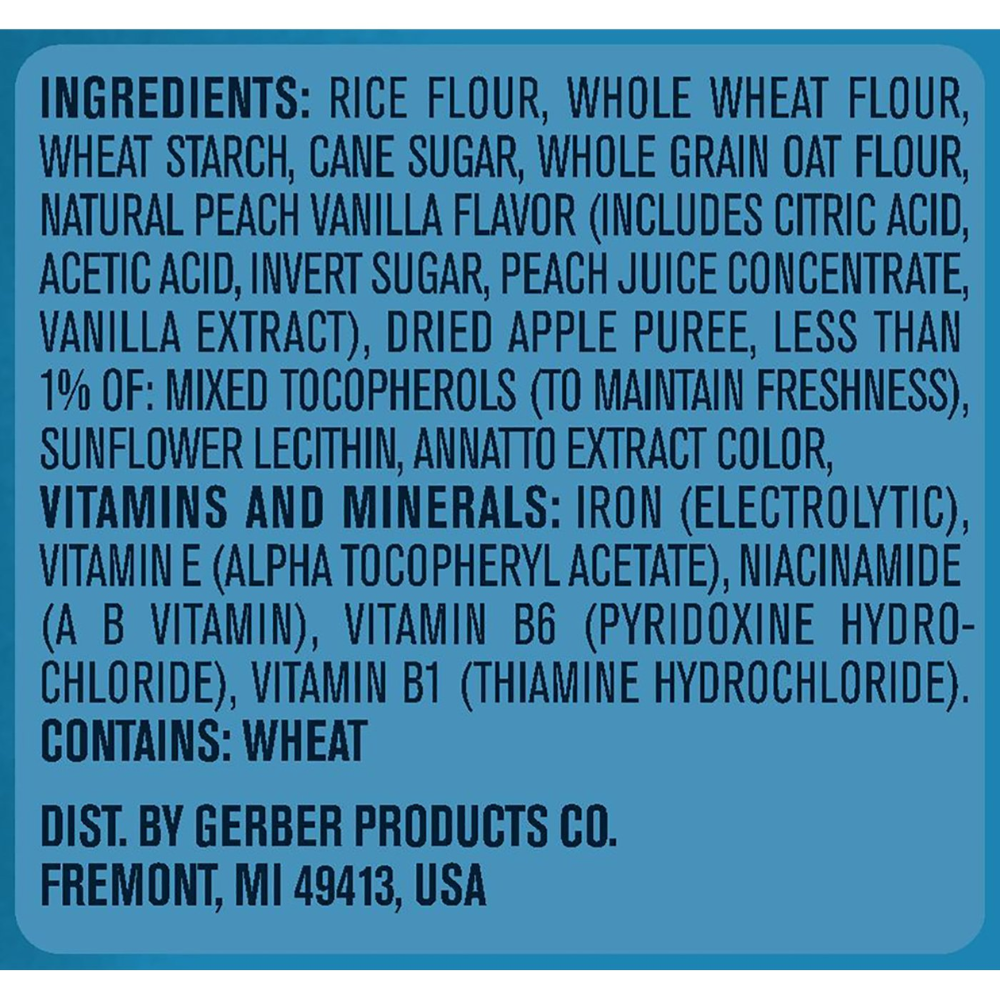
How many calories are in baby puffs?
Baby Puffs have about 420 calories per 100 grams, which is very high compared to other more nutrient-dense snacks such as fruit like strawberries, which have 33 calories per 100 grams, or bananas, which have 90 calories per 100 grams.
The thing is that they weigh very little because they are swollen. Therefore, it would be impossible to eat 100 grams since a portion of 10 pieces is approximately 1 gram.
How many baby puffs can be given to a baby in one serving?
Since it is a snack and is not intended to replace an entire meal, a usual serving once a day would be about 10 pieces, which is approximately 1 gram.
The main ingredient from which the baby puffs are made must also be considered.
Those made with rice are not recommended for constant consumption, as they may contain high levels of arsenic.
This is why it is crucial to change the type of grain and to have a diet as balanced and varied as possible.
Why do babies enjoy eating baby puffs?
Babies often like to eat baby puffs for several reasons.
First, they have a light, semi-crunchy texture that is easy to manage.
They can pick them up easily, and the fun shapes they tend to have is also a plus.
Babies can have a sense of autonomy and control over their food, just like when they do baby-led weaning.
The taste is very light and somewhat sweet, which babies tend to like.
How can I make homemade baby puffs?
Homemade baby puffs can be made using various ingredients such as rice, wheat, quinoa, oats, or barley. Making baby puffs at home is quite simple, and it involves blending the ingredients, shaping them into small balls, and then baking them. Here is a basic recipe you can follow:
Ingredients:
- 1/2 cup dry cereal (rice, wheat, quinoa, oats, or barley)
- 1/4 cup water
- 1/4 cup breastmilk or formula (if you want to add some flavor)
- A pinch of salt (if you want, but be aware of the risks of too much sodium in babies)
Instructions:
- Preheat your oven to 350F (180C) and line a baking sheet with parchment paper.
- In a blender or food processor, pulse the cereal until it’s a fine powder.
- In a small saucepan, bring the water, breastmilk or formula and salt (if using) to a boil.
- Slowly add the cereal powder to the saucepan and stir until a dough forms.
- Scoop out small dough balls and place them on the prepared baking sheet.
- Use a fork to gently press down on the balls to flatten them slightly or create a different shape.
- Bake for 10-12 minutes, or until golden brown.
- Let them cool completely before serving.
Since they have no additives, it is better to eat them in 2 or 3 days.
We let you this video down below for a recipe with rice and egg whites only.
When were baby puffs first invented?
Baby puffs were invented in the early 1990s. The first baby puff was Gerber Graduates Puffs, which was created by Gerber, a company dedicated to making baby food. The concept of puffed baby cereal was quite novel for the time and quickly became a popular baby snack.
Today, many other brands have their own version of baby puffs, being available in most supermarkets and online stores.
What are the Best baby puffs?
| Brands | Characteristics |
|---|---|
| Gerber Graduates Puffs | Original baby puff, fortified with vitamins and minerals, made with whole grains |
| Happy Baby Puffs | Organic ingredients, fortified with vitamins and minerals |
| Beech-Nut Puffs | Made with real fruits and vegetables, no artificial flavors, colors, or preservatives |
| Ella’s Kitchen Puffs | Organic ingredients, fortified with vitamins and minerals |
| NurturMe Yum-a-Roo’s | Whole grains, fortified with vitamins and minerals, gluten-free |
| Holle Organic Puffs | Organic ingredients, fortified with vitamins and minerals, gluten-free |
How are baby puffs made?
Baby puffs are made through a process called extrusion cooking. This process involves mixing ingredients such as cereal grains (rice, wheat, corn, or barley), water, and sometimes milk or other liquids. The mixture is then heated and forced through a small hole, or die, at high pressure and temperature.
As the mixture exits the die, it expands rapidly due to the sudden pressure release, creating small, puffed cereal pieces. The puffed cereal is then dried and sometimes coated with flavors or sweeteners, and then packaged and ready to be sold. The process is similar to the one used to make traditional puffed cereal but with a smaller size and specially formulated for babies.
Are there baby puffs that contain added iron?
Yes. You can look at the nutrition information on the packaging to find out if a particular brand of baby puffs adds extra iron to their puffs. As a supplement to baby meals and snacks, iron, an essential mineral that aids a baby’s cognitive development, is frequently used.
If iron is added, the amount of iron added per serving will be indicated in the ingredient list. You can check the daily quantities of iron on the nutrition facts label to the daily amounts advised for children your child’s age. Some companies that put iron in their puffs may also disclose this on the package or on their website.
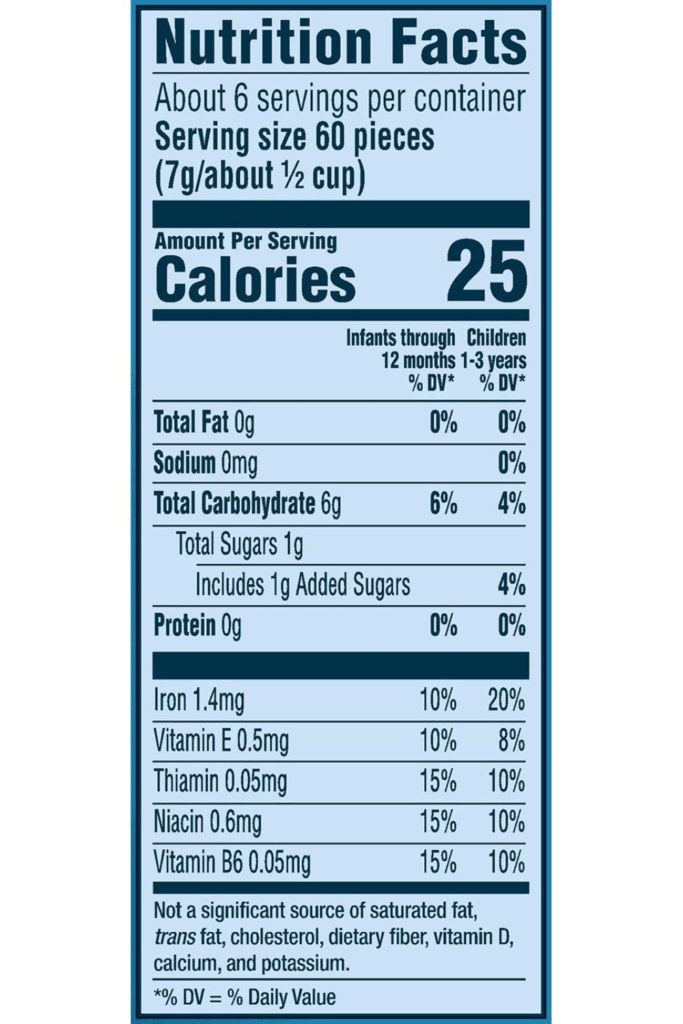
Can I find baby puffs with added fiber?
Added fiber is not common in baby puffs. They are not a very nutritious, so it is better to get fiber from more natural sources such as fruits, vegetables, or whole grains. There might be some brands with added fiber, but it could be ignored since, in the overall daily computation, it would make practically no difference if your baby follows a balanced diet.
Are there baby puffs that are sugar-free?
After much research, we have not found a brand of baby puffs that offers completely sugar-free baby puffs.
That said, the added sugar is less than 1 gram or less per 60 pieces, so it is nothing to worry about.
Where can I purchase baby puffs?
Supermarkets, baby shops, and online merchants are just a few places to get baby puffs. Baby puff brands are sold in a range of large supermarket stores as well as in baby specialist shops.
Furthermore, you can buy baby puffs online from merchants like Amazon, Walmart, and Target and through the websites of the various baby puff brands. Organic baby puff choices can be found in several health food stores.
Before introducing new meals to your baby, it’s crucial to carefully check the label of the product you’re contemplating to be sure it fits his or her nutritional needs.
Can consuming baby puffs cause diarrhea or constipation?
Generally, feeding baby puffs should not lead to diarrhea or constipation; however, it is essential to remember that each infant is diverse and might respond in a different way to various foods. Some babies may be more receptive to specific components in baby puffs, like artificial colors or sweeteners, which could cause digestive distress.
Additionally, introducing novel foods to your baby could bring about some gastrointestinal discomfort, as their digestive system is still maturing.
It is also significant to recognize that consuming too much of anything can bring about stomach distress, so it is essential to track your baby’s consumption and growth trends and always adhere to the suggested serving size on the product label.
Are baby puffs a healthy food option for babies, or should they be avoided?
When included in a balanced diet and taken in moderation, baby puffs can make for a convenient snack choice for infants. They are an excellent option for infants learning to feed themselves because they are simple for babies to hold and eat independently.
Baby puffs should not, however, be used in place of a balanced diet that includes fruits, vegetables, whole grains, breastmilk or infant formula, as well as other wholesome meals.
They are excellent for emergencies, such when you have to leave the house and need a quick snack, but they shouldn’t be a regular part of your baby’s diet. Eating a balanced diet and constantly giving your baby nutrient-dense foods is always best.
Remember that other types of snacks can be just as adaptable as baby puffs and are more nutritious, and we will discuss those next.
What are some alternative organic snacks to baby puffs?
Other snack options are more nutrient-dense and not mostly “air”.
The two most nutritious and healthy ones we have found are from the Holle brand. They are Spelt Biscuits, fruit bars, and fruit pouches.
How do Holle Organic Biscuits and Bars or Organic Fruit Pouches compare to baby puffs in terms of nutritional value?
Premade baby snacks from Holle are unique among the competition. Regarding snacks, Holle meets your expectations as a parent who wants the best for their kid. In their goods, they only employ organic, high-quality ingredients. This indicates that their products lack preservatives, chemicals, and pesticides.
They also refrain from utilizing any artificial sweeteners, flavors, or colors. These artificial additions frequently have no nutritional value and can harm infants. Holle also provides a wide range of gluten- and dairy-free choices for infants with allergies or sensitivities.
It’s crucial as a parent to have faith in the goods you offer your child, and Holle has gained my confidence. They are dedicated to giving babies only the finest, and their products reflect this.
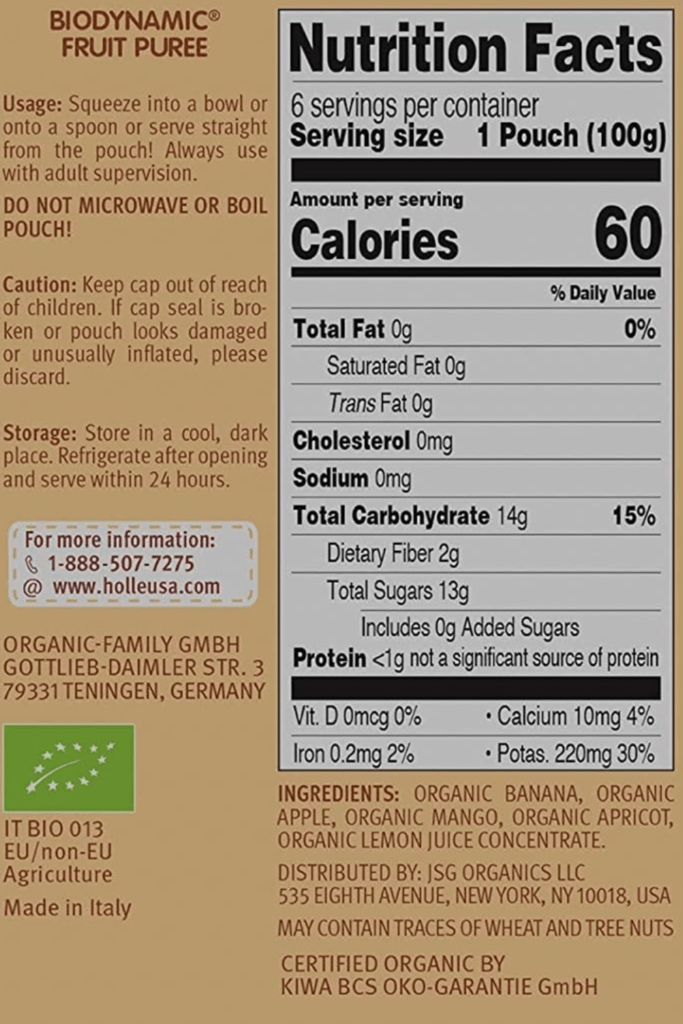
Where Can You Buy the Best Snacks for Your Baby?
I heartily suggest organicbabyfood24 as the finest store to get Holle snacks. The variety of Holle items available there is astounding and includes baby puffs, cereal, bars, biscuits, and fruit pouches.
They provide some of the best customer service, and I have had fantastic encounters with them while purchasing. They are always ready to assist and respond to your inquiries. And they are among the quickest and most dependable in terms of delivery, in my experience.
You can depend on them to deliver your item promptly and undamaged.
I read the evaluations for organicbabyfood24 and discovered that previous consumers had positive things to say about them. They are passionate about giving their clients the most excellent service and products, and that comes through in all they do.
Blwstore is supported by its audience. When you buy through links on our site, we may earn an affiliate commission.
Conclusion
Baby puffs can be a convenient and healthy snack option for babies when consumed in moderation as part of a balanced diet. They are easy for babies to hold and eat independently, making them an excellent option for babies learning to self-feed.
However, there are better options. We highlighted the benefits of Holle organic snacks, which use exclusive organic ingredients free from pesticides, chemicals, and preservatives and avoid using artificial colors, flavors, or sweeteners.
Remember that the most important thing is to provide a balanced diet that includes nutrient-dense foods since no snacks can replace natural foods.
We’re Maria and Alberto, a married couple and educators who are nutrition enthusiasts. Even before we had kids, we were already crazy about nutrition.
We’d read scientific articles, watch videos from nutritionists, and spend hours listening to nutrition podcasts.
Today, we continue doing this, but in a different way, as we’ve learned to sift through the noise and trends. Nutrition, like any other field of knowledge, the more you read and learn, the more you develop a comprehensive understanding of reality, and that’s what has happened to us.
Before having our first child, we focused on learning everything we could about child nutrition, using the same techniques we had already employed, backed by our extensive knowledge in nutrition.
Our mission is to help other parents with their children’s nutrition, to help them become the best versions of themselves.
If we are what we eat and drink, which is absolutely true, let’s do it right!


